Interview With “Behold “The Night Wind'” Author Christopher Yates!
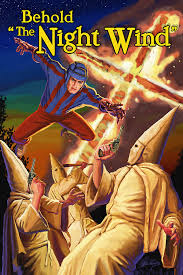

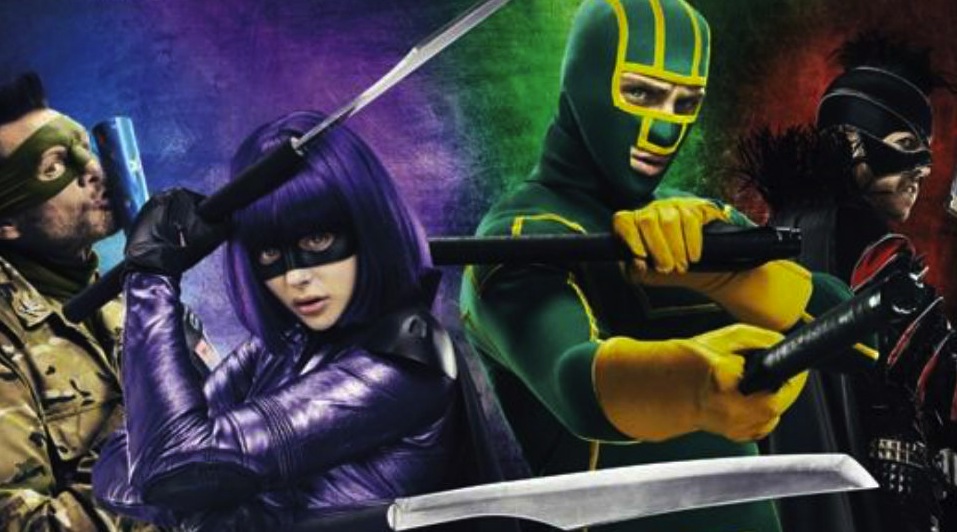
Well. This might be the easiest review I’ve written.
If you liked the first Kick-Ass movie, you’ll like this one. If you would have liked the first film if it didn’t have Nicolas Cage in it, you’ll be even happier.
If you are a fan of the Mark Millar/John Romita Jr. comic book series, you’ll like this movie. It’s a fairly faithful adaptation of Kick-Ass 2 and the Hit-Girl prequel series, hitting most of the points and only making cosmetic changes (no final battle in Times Square, for example.)
If you are a fan of Chloe Grace Moritz, you’ll love this film. Even more fun this time around, yet still growing up. Between this and the upcoming Carrie remake, we have learned one very important lesson: Do. Not. Mess. With. Her.
If you think that the story is a decent examination and a snappy satirical commentary about trying to be a superhero in the real world, you are completely right. If you happen to think that the first film and/or the comic book is overwrought and overviolent and expect the sequel to be the same, you are completely right too.
If you think this is a way for comic book movies to keep things simple and get decent returns on their original investments by controlling costs instead of making R.I.P.D., you’re correct. If you think this is a cynical attempt to cash in on an easily extendable franchise, you’re right as well.
If you’re looking for surprises– well, there we have a problem. There really aren’t any if you’ve seen the first film, and especially if you’ve already read the source material. There are only two real areas for surprise here: will they keep all the levels of violence from the comics in the films, even the hyper-brutal and the completely ludicrous, and is it still going to be fun to watch knowing what’s coming next? The answer to both questions, BTW, is “yes”.
So go. Have fun, if this is the sort of thing you like. You know pretty much exactly what you’re going to get, and it’s going to be well-executed executions. It doesn’t quite live up to its title, it doesn’t quite kick ass too. But it’s not a bad way to spend an evening.
Music and fashion mogul Russell Simmons announced in an interview with Entertainment Weekly that The Harlem Shadow, a new animated online superhero series that will be set in the Jazz Age, will be revealed at the New York Comic-Con in October. The Harlem Shadow will feature hip-hop star Common (currently seen in AMC’s Hell on Wheels) in the title voice role and is executive produced by David Uslan.
After the NYCC debut in October, look for The Harlem Shadow content will be online by the end of the year at All Def Digital, the YouTube channel from Simmons and Awesomeness TV’s Brian Robbins.
The Harlem Shadow is an adaptation of the indie small-press series of the same name from RavenHammer Comics and the creative team of Brian Williams and Christian Colbert.
About the comic book:
THE HARLEM SHADOW
BIRTH OF THE COOL
Born at the tail end of the Harlem Renaissance, The Harlem Shadow is the first official Black paranormal crime-fighter that hit the streets of New York around 1929-1930. He was known for his scary appearance, his vicious hand to hand
combat skills and his mastery of two lethal revolvers, used to maim and disarm his enemies but never kill. In 1950 as a result of the Black Mask Act…Harlem Shadow was hunted down by New York City Police, lynch mob style, and unmasked. His name was Linden Somerset, a school teacher and librarian, and he served a twenty year jail sentence at Alcatraz Island. This is his story.
You can read the entire EW interview here.
Dark Horse Comics has released new comic book stories featuring the classic pulp hero, Captain Midnight.
About Captain Midnight:
On the run from the US government after fleeing custody, Captain Midnight has been labeled a security risk. In the forties, he was an American hero, a daredevil fighter pilot, a technological genius . . . a superhero. But since he rifled out of the Bermuda Triangle into the present day, Captain Midnight doesn’t know what or who to trust!
A key title in Dark Horse’s new superhero initiative!
Written by Joshua Williamson (Masks and Mobsters, Voodoo, Uncharted) with art by Fernando Dagnino (Resurrection Man, Suicide Squad)!
Featured on Free Comic Book Day!
CREATORS
Writer: Joshua Williamson
Artist: Fernando Dagnino
Colorist: Ego
Cover Artist: Felipe Massafera
Publisher: Dark Horse Comics
Genres: Action/Adventure, Superhero
Release date: 07/31/2013
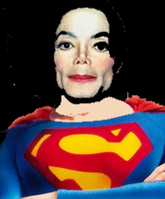 Before I Do This Thang for the week: I’ve been getting messages from readers. Apparently, I do have them. Or, as Bob Hope might have said, “I know you’re out there, because why else would Dolores be propping me up in that direction?”
Before I Do This Thang for the week: I’ve been getting messages from readers. Apparently, I do have them. Or, as Bob Hope might have said, “I know you’re out there, because why else would Dolores be propping me up in that direction?”
These messages I’m talking about are all “Why do you use so many links?” Clearly, if you’re asking this, you’re not clicking on them. Hint: Some – not all, or even most, but some – of them don’t lead where you might assume they do. They are instead meant to be weird, “disconnective,” hit-or-miss jokes in and of themselves. So, as the most celebrated member of The Hair Club For Men once put it, “’Nuff said.”
Now, on to That Thang. Meaning I have to stop vamping with jokes about what I didn’t learn in San Diego the weekend before last, and, God help me, actually come up with a third and final part of my highly speculative and putatively uninformed rant to go with the first and second parts. [I say “putatively” because Richard Feder of Fort Lee, New Jersey, writes, “Aren’t the comics selling better than ever? What should I do?” (And, no; no link this time. Get off your fat ass and Google it.)]
If you’re just joining me here for the first time, please feel free – unless your ass really is too fat to allow you to lean over and reach your mouse or trackpad – to check out those previous parts. And maybe click on some on those links you’ve been skipping over. Go ahead. I’ll wait. It’s not like I have anything better to do.
Back now? Good.
One thing Iwasn’t joking about last week: SDCC really didn’t shed much light on whether the Big Two might be incrementally but profoundly changing how they think about creating and marketing comics. Specifically, that they might have to take back total creative control from the freelance talent, to better justify their claim that comics help generate new, original movie and TV properties – titles and characters that aren’t mere spin-offs from the oldest, best-known super hero “brands.”
But I remained in the dark not, as I facetiously suggested, because of the conditions endemic to the con itself, but, rather, because the Big Two’s massive “booths” at least appear to still be doing their dog-and-pony shows in much the samo-samo way as they have been since the beginning of The Gastrotrich Super-Star era and the annual “continuity stunt.” You know – the age of what I like to call Michael Jackson Comics. As in, “We’re going to keep rearranging our face because it gets us publicity even though we don’t entertain anybody anymore. (But we do have a few pet chimps who clap for us when we do it.)”
At first, superficial glance, little seems to have changed this year. There were the same long lines of people waiting for something, but you couldn’t quite be sure what because the crowds were too dense. And there were the same old book signings by the Flavors Of The Week – those comic book “creators” who have been rocketing out of obscurity and vanishing back into it just as fast, ever since Hollywood’s “‘bankable’ star” mentality was first applied to four-color pamphlets by, if memory serves, Jenette Kahn. She was the first Big Two publisher to wonder, for example, whether Superman might not sell better if it were John Byrne’s Superman.
And it did.
For a while.
Thirty years ago.
But this year at SDCC, when I took a closer look at those exhibits, and let my eye follow carefully where that long line was snaking to, it seemed as if more and more of those people were queueing up for a chance to glimpse some “teaser” footage from an upcoming movie or TV show, and the lines to buy signed copies of Flavor of the Week’s Superman or Smokin’ Hot Newcomer’s Spider-Man were shorter. The “brand” – the property – was what was making the loudest ka-ching, ka-ching.
But the people who decide what will be presented in these exhibits seem not to notice, and persist in announcing new comic book titles whose selling point is presumably the name of the creative talent rather than the super hero brand. Meanwhile, superhero feature films continue to succeed without being dependent on major stars in their casts, a phenomenon that is a reflection of a larger, industry-wide paradigm shift.
The early warning signs might be barely noticeable, but I really think they’re there. And it’s getting harder not to wonder whether someday – maybe sooner than even cynical me suspects – Disney and Warners will have convinced themselves that they can endlessly exploit their existing brands, through reboots not unlike those in the old annual face-changing stunts, without any help from their four-color pamphleteers. And if their comic book divisions will have ceased to yield new brands they can add to the product mix as break-out hits, they might start to wonder whether all those Flavors of the Week and their pamphlets are any use to them at all.
LATER TODAY: Emily S. Whitten Returns!
FRIDAY MORNING: Martha Thomases
SATURDAY MORNING: Marc Alan Fishman
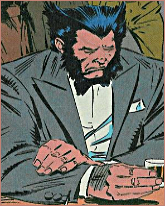 I wasn’t wearing a tie last Friday when Mari and I hied ourselves up the road to the monsterplex to watch the movie du jour, The Wolverine. Nothing unusual there; to the best of my recollection, I’ve worn ties exactly twice in the last quarter century. The first such occasion was at my wedding, a bow to the mores of the tribe that spawned me. The second was when I accompanied Jenette Kahn, at the time my boss, to meet some guy from the United Nations at one of those hoity-toity Manhattan restaurants that don’t permit entry to gentlemen un-tied, and while they’re at it, the gents had best be wearing suits too – or at least jackets. These are classy joints. They don’t let just anyone in. To chow down at one of them, you have to be of the elite, or at least prosperous enough to buy a strip of cloth to hang down the front of your shirt.
I wasn’t wearing a tie last Friday when Mari and I hied ourselves up the road to the monsterplex to watch the movie du jour, The Wolverine. Nothing unusual there; to the best of my recollection, I’ve worn ties exactly twice in the last quarter century. The first such occasion was at my wedding, a bow to the mores of the tribe that spawned me. The second was when I accompanied Jenette Kahn, at the time my boss, to meet some guy from the United Nations at one of those hoity-toity Manhattan restaurants that don’t permit entry to gentlemen un-tied, and while they’re at it, the gents had best be wearing suits too – or at least jackets. These are classy joints. They don’t let just anyone in. To chow down at one of them, you have to be of the elite, or at least prosperous enough to buy a strip of cloth to hang down the front of your shirt.
They’re signifiers of distinction, of class, neckties are, and as such they’re akin to a clergyman’s vestments, a soldier’s uniform, a detective’s badge, the rented tuxedo I once wore to a prom…feel free to add your own examples. I’ll add one more of my own: superhero costumes.
Odd clothing has been a defining feature of superhero stories ever since that warm Cleveland morning when a teenaged artist named Joe Shuster made the first Superman sketch. This was almost certainly done at the behest of Superman’s co-creator, another Cleveland teen, Jerry Siegel. Why the funny suit? Well, Jerry and Joe were big science fiction fans and were probably influenced by the futuristic garments worn by the characters in the illustrations that were prominent in the pulp magazines – at the time, sci fi’s main venue. Circus costumes may have been another influence.
Whatever Jerry and Joe’s reasons for costuming their brainchild, it was a good idea. It was attention-getting, it marked Supes as something special, it was ideally suited to the iconic quality of the medium that eventually gave him a home, comic books. Consider it an unwritten rule: you want a superhero, bring on the costume.
But Wolverine is most surely a superhero and there he was on the big screen, embodied by Hugh Jackman who was wearing, not a costume, but duds you might buy at a sporting goods store. In so doing, he was nudging superherodom a tiny bit closer to what we will jocularly refer to as real life, and not the fantasyland versions of Mother Earth that have been superheroes’ usual domains. This is an aspect of the genre’s evolution and we’ll have to see if it becomes permanent. If it does stay, writing jobs may be get a bit simpler; storytellers won’t have to give their superdoers a pause to change clothes before dealing with the latest humungous crisis. (Lois, could you fall a little slower?…can’t get the cape to hang right…) But some quirky charm may be lost.
Time will tell. It always does.
THURSDAY AFTERNOON: Martin Pasko
THURSDAY LATER AFTERNOON: The Surprising Return of Emily S. Whitten!
NOTE: All allusions to “morning” and “afternoon” are EDT USA.
 |
| Cover Art: James Burns |
Demon Press has released the cover for the upcoming release, Über-tales – 5 tales of derring-do to shock and amaze you by James Burns.
About Über-tales:
This 40-page full-color book contains a variety of stories; from superhero allegory to WWII adventure to end-time religious heresy. There’s something for everyone in this adventure-filled tome. Stories and art by James Burns, with 2 stories written by Pulp award-winning writer Bobby Nash.
Included in this collection is “The Crown of Ghengis Kai” a Lance Star: Sky Ranger adventure, written by Bobby Nash with art and colors by James Burns.
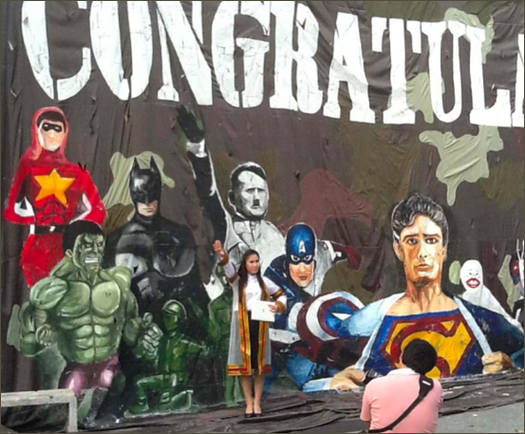 If you’re in Chulalongkorn University’s freshman art class… well, you’re in Thailand. And you’re attending one of that nation’s leading schools.
If you’re in Chulalongkorn University’s freshman art class… well, you’re in Thailand. And you’re attending one of that nation’s leading schools.
Oh yeah, and you’re also as dumb as a bag of doorknobs. And The Simon Wiesenthal Center doesn’t think much of you.
Go figure. As you can see from the above photo, the freshmen painted a farewell banner to the outgoing class of 2013. Yes, that’s Superman, Batman, Captain America, the Incredible Hulk, and Adolf Hitler sending the graduates off to their future.
The idea was to show that good and bad people coexist in the world, according to school dean Dr. Suppakorn Disatapundhu. He also said “(We) would like to formally express our sincere apology for our students’ superhero mural… I can assure you we are taking this matter very seriously.” He did; they took it down. Well, they took it down after two days. And after photos got out showing enrobed graduates imitating the infamous Nazi salute.
You will note the superheroes (giving the Hulk the benefit of the doubt) were in color and Wicked Uncle Adolf was in greytones. “They told me the concept was to paint a picture of superheroes who protect the world,” Dr. Suppakorn told the Associated Press. “Hitler was supposed to serve as a conceptual paradox to the superheroes.” I guess something got lost in translation. The Camptown ladies sing this song, Doo-da, Doo-da…
Now, as a professional comic book editor (depending upon how you define “professional”), I would not hire these students. But it’s not out of any perceived sense of anti-Jewish or pro-Hitler feelings. Absent of other information, I’m willing to take Dr. Suppakorn at his word. And I wouldn’t pass them by because they are undereducated. If you can draw swell and you make deadlines and you don’t throw up on the publisher’s rug, you’ll get lots of work.
I wouldn’t hire them because, artistically speaking, these kids really suck at their chosen profession.
As for the folks at the Wiesenthal Center: you guys gotta work on that “Never Again” thing. You’re losing traction.
THURSDAY MORNING: Dennis O’Neil
THURSDAY AFTERNOON: Martin Pasko
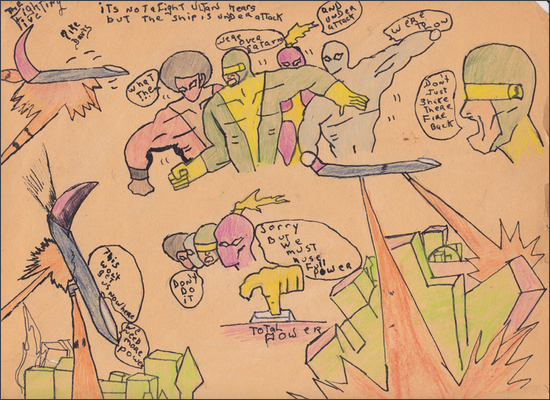 The other day I was sitting in my studio at 4 AM working on a double page spread for a graphic novel I’m writing and illustrating.
The other day I was sitting in my studio at 4 AM working on a double page spread for a graphic novel I’m writing and illustrating.
There was a movie playing in the background, coffee and tequila on my side table and my dog Puffy laying at my feet. The house was silent, well silent except for the screams of the guy Jason Statham just threw off a roof in the movie I was watching.
Other than that guy screaming like a little bitch, my house was silent.
All of a sudden it hit me. I’m an artist.
I went to school to become a professional illustrator. I wanted to study to be a cartoonist because I wanted to do comics so badly!
My cousin told me if I became a cartoonist I would “stave and die.” My cousin was also my mentor and if not for him there was a very good chance I’d be in jail or dead now.
No joke.
He’s also a world-renowned artist. How renowned? The house I live in cost less than one of his paintings and I live in a pretty nice house.
Again, no joke.
So when your cousin who is also your mentor who also saved you from death and/or prison who is also a world-renowned artist tells you if you became a cartoonist you will stare and die, you listen.
I listened.
I became an illustrator and as luck would have it the industry changed so as an illustrator I could still do comics just not the traditional way they had been done.
My illustration career was pretty damn good before I got into comics that I did pretty damn bad. It took me a while to understand the medium but once I did the work got better…I hope.
Somewhere along the way my illustration and comics career stopped completely as I found myself working in other media: television, publishing, radio and education.
Before I knew it I had a mini entertainment empire going and the only art I was doing was doodling a fat Batman every chance I got.
At 4 AM the other day sitting in my studio I realized that all is right when I’m doing art. Just me, my dog, my Captain Action mug for my coffee and tequila, a movie and my work is freakin awesome.
No Hollywood drama, no politics, no egos, no bullshit.
It’s like when I was in the sixth grade drawing the adventures of The Fighting Five my very own superhero group. The Fighting Five were, the Liberator, (spelled Liverator; I went to public school) Bulldozer, The Anything Man (because I couldn’t think of anything else to name him) Judo Master (stolen from Charlton Comics but I felt I could use him because his book was cancelled) and The Human Torch (but it was the original Human Torch and I felt I could use him also since Marvel had thrown him away).
When I was alone in my room in the projects with my art nothing else mattered and I was the happiest I’d ever been as a child. Now, I’ve come full circle as I sit in my studio alone at 4 am in the morning happy with what I’m doing and who I am.
People have a hard time putting me into a category because I wear so many hats. I usually just say I’m a content producer but that’s never really felt right to me. It’s just an easy way for me to say, I’m a writer, TV producer, etc., etc., Shado, Shado (a invitation to my annual San Diego Comic Con party to the first person that gets that joke) I just figured out at 4 am in the morning sitting in my studio what and who I am.
I’m Michael Davis… and I’m an artist.
WEDNESDAY MORNING: Mike Gold Presents Pulp Pulchritude
THURSDAY MORNING: Dennis O’Neil Goes Fourth
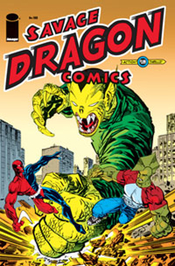 Spoiler Alert: In the current issue of Savage Dragon, writer/artist Erik Larson murdered a bunch of children. All I have to say about that is… it’s about time!
Spoiler Alert: In the current issue of Savage Dragon, writer/artist Erik Larson murdered a bunch of children. All I have to say about that is… it’s about time!
Larson’s book has been around about as long as Image Comics and presently is in its 188th issue, not counting crossovers, spin-offs and mini-series. That’s quite an accomplishment. It’s also one of the most consistently entertaining comics on the racks, and that’s even more of an accomplishment. He’s also a nice guy, but that’s only marginally important to my thoughts right now.
Back before there was Daredevil, there was Daredevil – in a sense, the world’s second homeless superhero. But instead of being homeless because his planet exploded went blooie, he was homeless because he was squeezed out of his own comic book by a group of know-it-all brats called the Little Wise Guys, a Bowery Boys-style knock-off that was introduced early on and swiftly reduced Daredevil to walk-on status in his own book. How cool were the Little Wise Guys? Well, they were named Curly, Jocko, Peewee, Scarecrow, and Meatball… and Meatball was killed off two issues later. I forget how, but I think it had something to do with marinara sauce.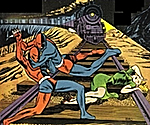
Daredevil was one of the most visually interesting characters of the Golden Age, and that’s saying a lot. He was created by Jack Binder and immediately revised by writer/artist/editor Jack Cole shortly before Cole created Plastic Man and later enhanced by Charles Biro. I cannot fault publisher Lev Gleason for hiding the guy behind his wacky Greek chorus – we are compelled to assume they were the reason for the title’s continued success. The series lasted 134 issues, getting cancelled when the publisher went out of business. This was in 1956, the same year DC brought back and revamped The Flash. But Daredevil himself did not even appear on the cover of the last 86 issues.
Why they didn’t change the name of the book is beyond me.
Loyal comics fan that I am, I have always resented those little bastards. And, to my amazement and amusement, in the current Savage Dragon story arc Erik brought back Daredevil, his arch-villain The Claw, and the Little Wise Asses… and, rather early on in this month’s story, killed the obnoxious rugrats dead.
There’s a morality in Golden Age superhero comics, one that we’ve kind of lost over the decades. The Golden Rule of the Golden Age is “at the end, justice wins out.”
In this case, justice came from the mighty swift sword (well, computer and drawing board) of Erik Larson.
Thank you, Erik.
THURSDAY: Dennis O’Neil
FRIDAY: Martha Thomases